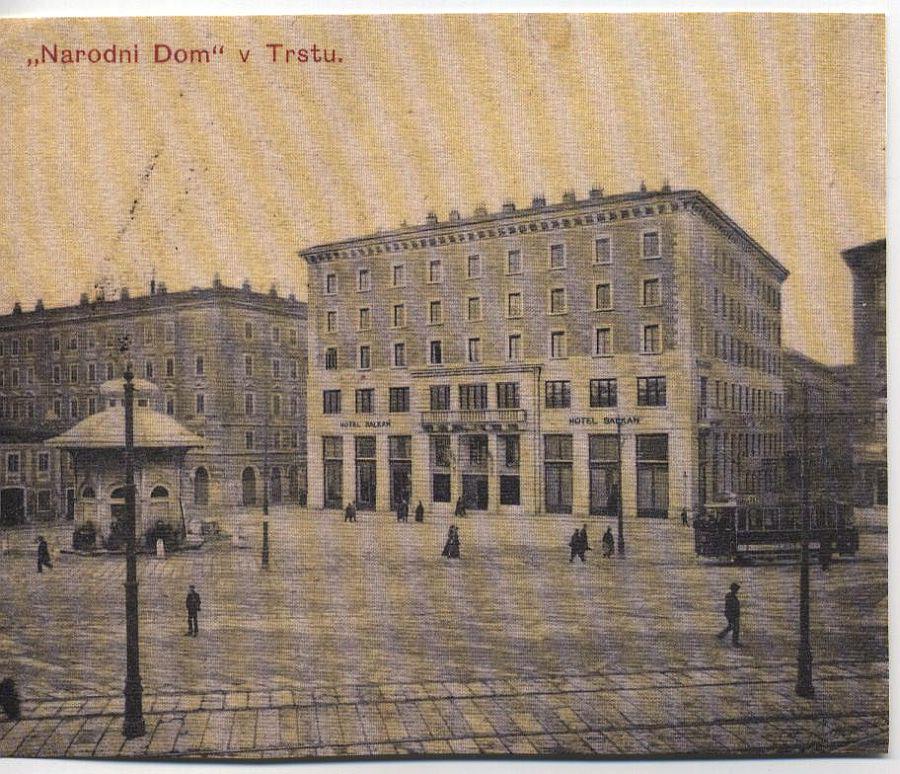
The port city of Trieste has always been of great importance to the Slovenian people. Even though they never constituted a majority in the town itself, Slovenians constituted the majority in the surrounding villages, and Trieste hosted several institutions that occasionally rivaled those of Ljubljana.
One of the prominent visible indications of Slovenian culture was the Slovenian National Home built in 1904, when the city was still a part of Austria. The building was designed by the prominent architect Max Fabiani; it housed a hotel, as well as a theater a lively café - where members of the local community could gather -, along with several Slovenian clubs.
After World War I, however, the city of Trieste was awarded to Italy, and the Slovenian community suddenly became an endangered minority. The nascent Italian Fascist movement wanted to create an ethnically pure Italian state and by 1920, tensions between Yugoslavia and Italy were growing by the day. A shooting between Yugoslavs and Italians in the Croatian city of Split on July 13 brought tensions in Trieste to a boiling point. The Fascists began to spread false rumors about Slovenian aggression towards Italians; they attacked the Yugoslav consulate in the city and then used gasoline to set the Slovenian National Home ablaze.
The building burned to the ground, killing a hotel guest who had failed to escape. The arson dealt a painful blow to members of the Slovenian community, who lost a cultural and social focal point, and was an early indicator of the criminality of the Fascist movement.
Among the eyewitnesses was a small boy named Boris Pahor, who was deeply moved by the arson. Now a centenarian and an accomplished author, he views the burning as a central moment in his life – an event that helped to define him as a writer of novels about the suffering of Trieste’s Slovenians.
In 1990, the building was renovated, and it now houses a Slovenian organization – a symbol of the tolerant and multiethnic future of a city that has always been so significant to the Slovenian people.

































































